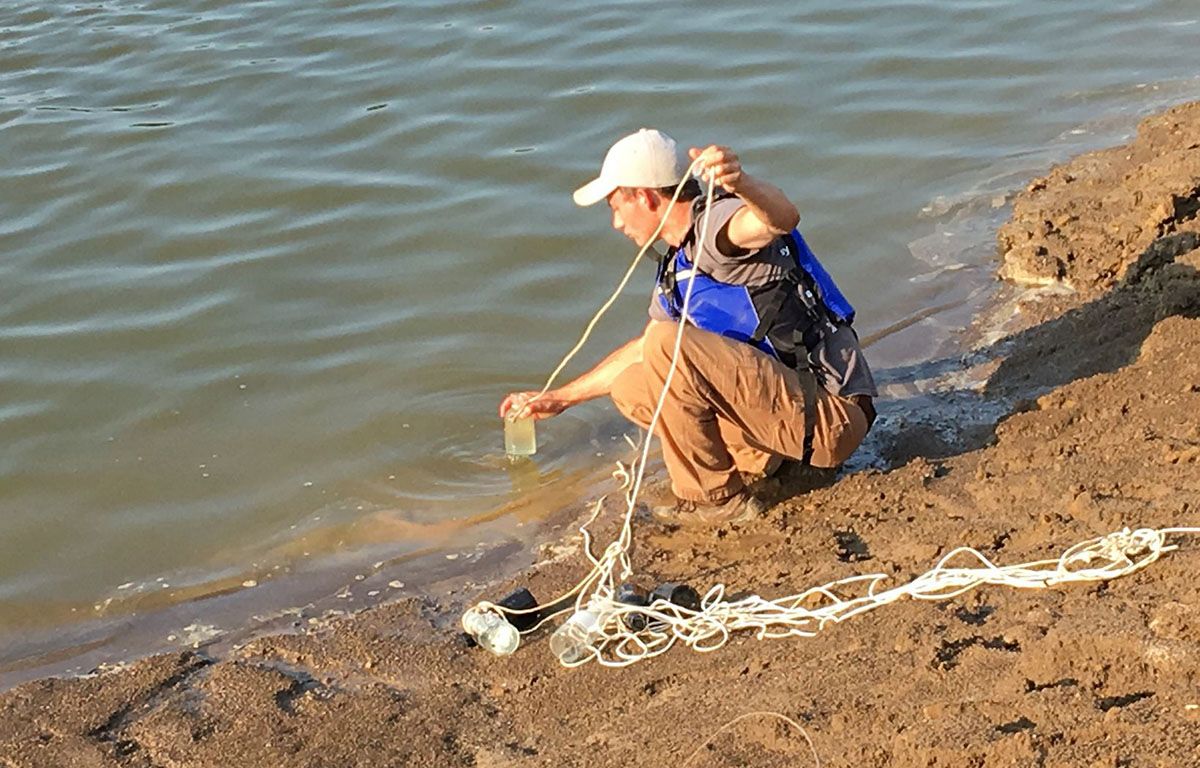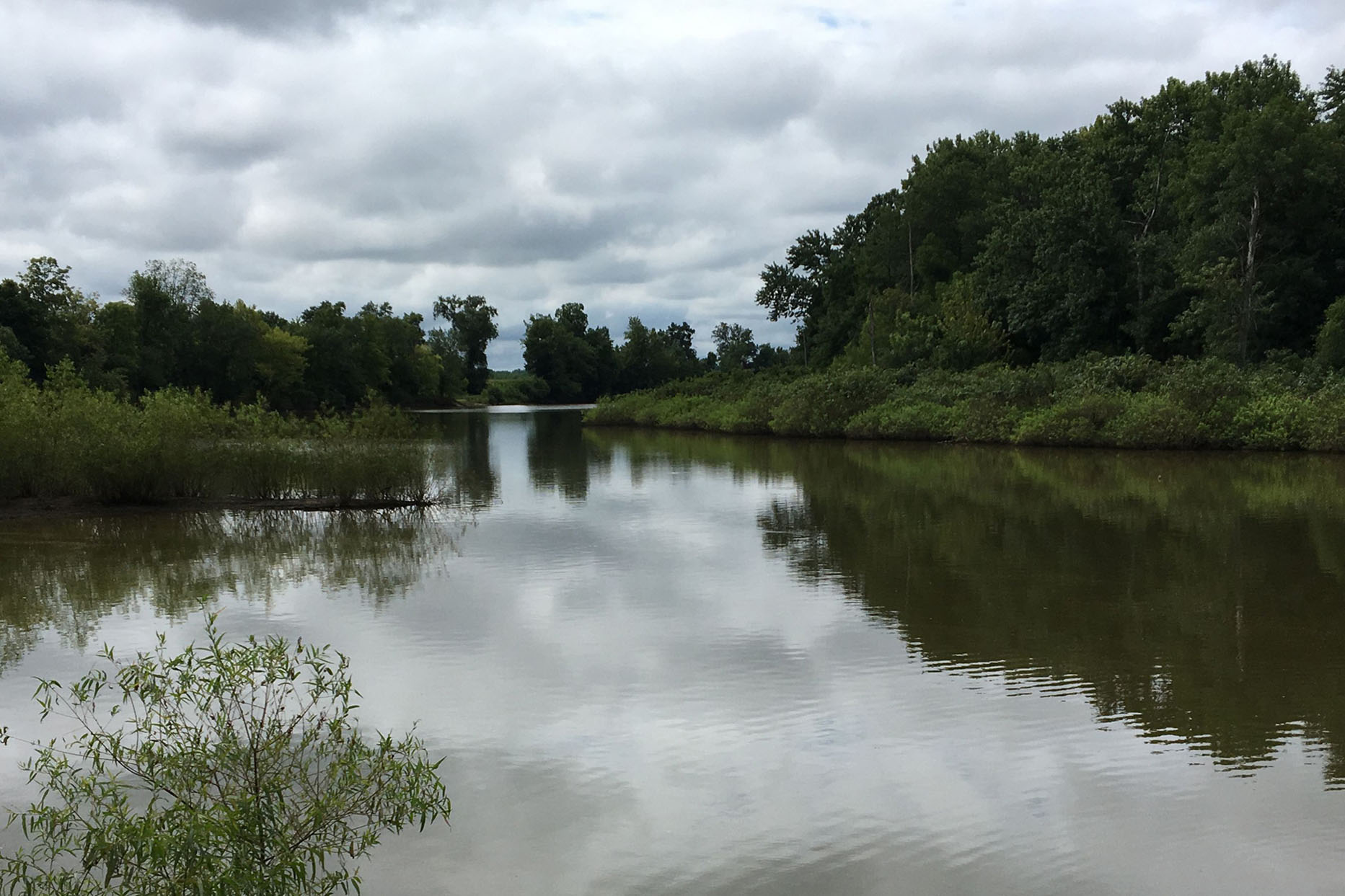Protecting Oxbow Lakes
The Wabash River and Its Oxbow Lakes
The Wabash River is nearly 500 miles long and spans the entire state of Indiana. It has served as a vital conduit for trade, travel and settlement in the Midwest for more than two centuries. The Wabash and its connected rivers and streams provide drinking water to 72% of Indiana counties and rich soil for agriculture. It inspired the song On the Banks of the Wabash by Paul Dresser, which became one of the best-selling songs of the 19th century and the official state song of Indiana.
The Wabash River’s meandering path has created bends where sediments have deposited, creating horseshoe-shaped bodies of water known as oxbow lakes. The oxbow lakes of the lower Wabash and White rivers provide important and rich habitats for animals, fish and wildlife, and for agriculture.
Decades of draining and developing land in the Wabash River watershed have degraded the quality of its waters and soil, in the watershed itself and downstream where the Wabash joins the Ohio River. Loss of wetlands and natural riparian areas has increased flooding, and deforestation has increased riverbank erosion. Most of the previously abundant fish species have declined or disappeared from Midwestern rivers over the last hundred years.
Toyota Support at a Watershed Moment
Despite the ecological importance of oxbow lakes, we know little about their overall health. Until a few years ago, no conservation strategies had been developed around this important habitat type in Indiana.
The Nature Conservancy (TNC) has been engaging in new research to explore how oxbow lakes can help restore the rich biological diversity of the area and the role of oxbow lakes in its freshwater conservation strategies. Support from Toyota Indiana has allowed TNC to delve into this more deeply.
TNC has worked with researchers to determine where protection and restoration efforts will have the greatest impact. These efforts include reducing the amount of nitrogen, phosphorus and sediment entering the waterways and planting trees to provide natural filtration along the shorelines. In addition, Toyota Indiana’s support allowed TNC to monitor the oxbow lakes that represent areas with high potential for conservation and develop strategies to incorporate oxbow lakes into healthy floodplain conservation.
“Toyota Indiana has been a dedicated supporter of TNC’s work in southwest Indiana for many years, and we are proud to call them a partner. Their support has generated real results for clean water in Indiana.”
- Brad Smith, Lower Wabash and Wetlands Program Director at TNC

Oxbow Lake Water Sampling
Toyota Indiana’s support has allowed TNC to monitor the oxbow lakes that represent areas with high potential for conservation and develop strategies to incorporate oxbow lakes into healthy floodplain conservation.
Strength in Partnerships
The goal of this research is to improve habitat quality in and around the lakes and to understand how floodplain restoration work impacts the ecology of the Wabash and greater Mississippi River basin. Research findings from TNC and its partners show that land use in the area immediately around the lakes plays an important role in the quality of habitat in the lakes, which impacts fish diversity. Additionally, protection of habitat and/or encouraging the use of Best Management Practices in agricultural lands can have a positive impact on fish habitat by improving water quality in the lakes.
Toyota Indiana’s support has also funded several events geared toward farmers, landowners and partners interested in improving conservation practices, such as the November 2021 Regenerative Ag Forum: Next Steps for Soil Health & Climate Mitigation. This was a conservation conference for farmers, landowners and partners, where experts discussed soil health, reducing crop costs and fertilizer run-off, building resilience to extreme weather events and moderating climate change. The current project with Toyota Indiana will also provide outreach about conservation programs to historically underserved audiences through a partnership with AgrAbility and the Indiana Chapter of the Veteran Farmer Coalition.




